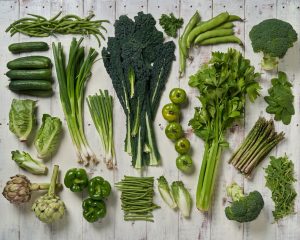Aging is inevitable, but it doesn’t have to be the end of your athletic career. Here are some training adjustments to consider as you age.
There aren’t many things that you can predict with absolute certainty, but aging is one of them. Fortunately, runners are probably the most optimistic bunch of agers out there, and many of us even look forward to stepping up an age group!
Some of the physical changes we can expect with age include:
- Loss of muscle size and strength
- Reduced power
- Lower Vo2 Max
- Increased body fat
Just because we generally have active lifestyles does not mean that we should ignore the changes we see happening with age. There is a lot that we can do in both training and lifestyle to slow down the process.
Lift Heavy
Muscle mass starts to decline in the mid to late thirties. It occurs at a rate of around 3-5% per decade and speeds up once one we hit the mid to late 50’s, to about 7-8% per decade. This mainly affects the fast-twitch fibers, which is the reason why an athlete tends to lose power and speed rather than endurance.
Sadly, no amount of swimming, cycling or running will help preserve fast-twitch fibers, because endurance activities generally don’t provide sufficient load for that type of muscle adaptation. Instead of doubling down on the long slow distance (LSD), Dr. Stacy Sims suggests lifting heavier as you age to preserve muscle mass. This means exercises like deadlift, squats, leg press, seated or bent-over rows, with a heavy load and a low number of repetitions. Dr. Sims’ work (and her excellent book ROAR) focuses on female athletes of all ages, but the concepts apply to men as well.
Many aging athletes feel that lifting in such a way may actually cause them injury, and of course, if you have a poor lifting technique then that might happen. But if you have good technique, then heavy work in the gym can have a number of wonderful benefits. Maximal strength can improve, and with it, power. Heavy weights can also lead to improved resilience in connective tissues, which will be a big help in the battle to stay injury-free. At the very least, one can slow down that loss of muscle mass—and in some circumstances, you may even gain new muscle.
Maintain Range of Motion
With age, our joints tighten up and the range of movement (ROM) around a joint or series of joints can be reduced. If velocity is measured by limb frequency and length of stride, a loss of ROM (coupled with that loss of speed/power mentioned earlier) ultimately results in a slowdown.
Decreased mobility also increases your risk of injury. Any athlete should aim to avoid an injury, but it’s even more important in your older years, as any lost fitness is harder to regain. To increase your mobility, Dr. Kelly Starrett recommends doing at least 15 minutes of mobility work for every 60 minutes of training each week.
Don’t Skimp on Intensity
As you age, long slow distance (LSD) should become less of a priority, and high-intensity training must occupy the forefront of your mind. Like with heavy lifting, this can seem counter-intuitive to older athletes but it does work, and if you are healthy and injury-free then you have absolutely nothing to fear.
To retain or build in regular high-intensity interval workouts, aim to work at an RPE of 9-10 for around 10% of your total weekly duration. This, of course, will depend upon your training history and attention to other recovery factors.
You may want to be cautious about fast running, especially if you have a history of calf or achilles problems. Quality is the key, so don’t be shy about taking a longer recovery interval between repetitions if you feel you need it.
Listen to Your Body
You have gained some athletic wisdom over the years, so you should use it! Recovery between workouts also requires adjustment with age.
The bottom line is that you have to be more compassionate to your body. You’ve been using it hard for 30, 40, or even 50 years and it has served you well. Now is the time to repay that service with some kindness. Look after those aching joints, tired muscles and well-used heart.
Listen to your body and if you’re ever in doubt about a workout or your health on that day, take it easy, or rest. As an older, wiser athlete you have hopefully learned to control your ego a bit and can be comfortable finding the path for long-term consistency.
At some point, we all must accept that we are no longer going to get faster or more powerful—but avoiding the slow down as much as possible can be just as exciting a goal! By lifting heavy weights, maintaining intensity, and looking after your mobility and recovery, you’ll be healthy and performing well into your later years.
Article Source ; https://www.trainingpeaks.com/blog/training-hacks-for-the-masters-athlete/





